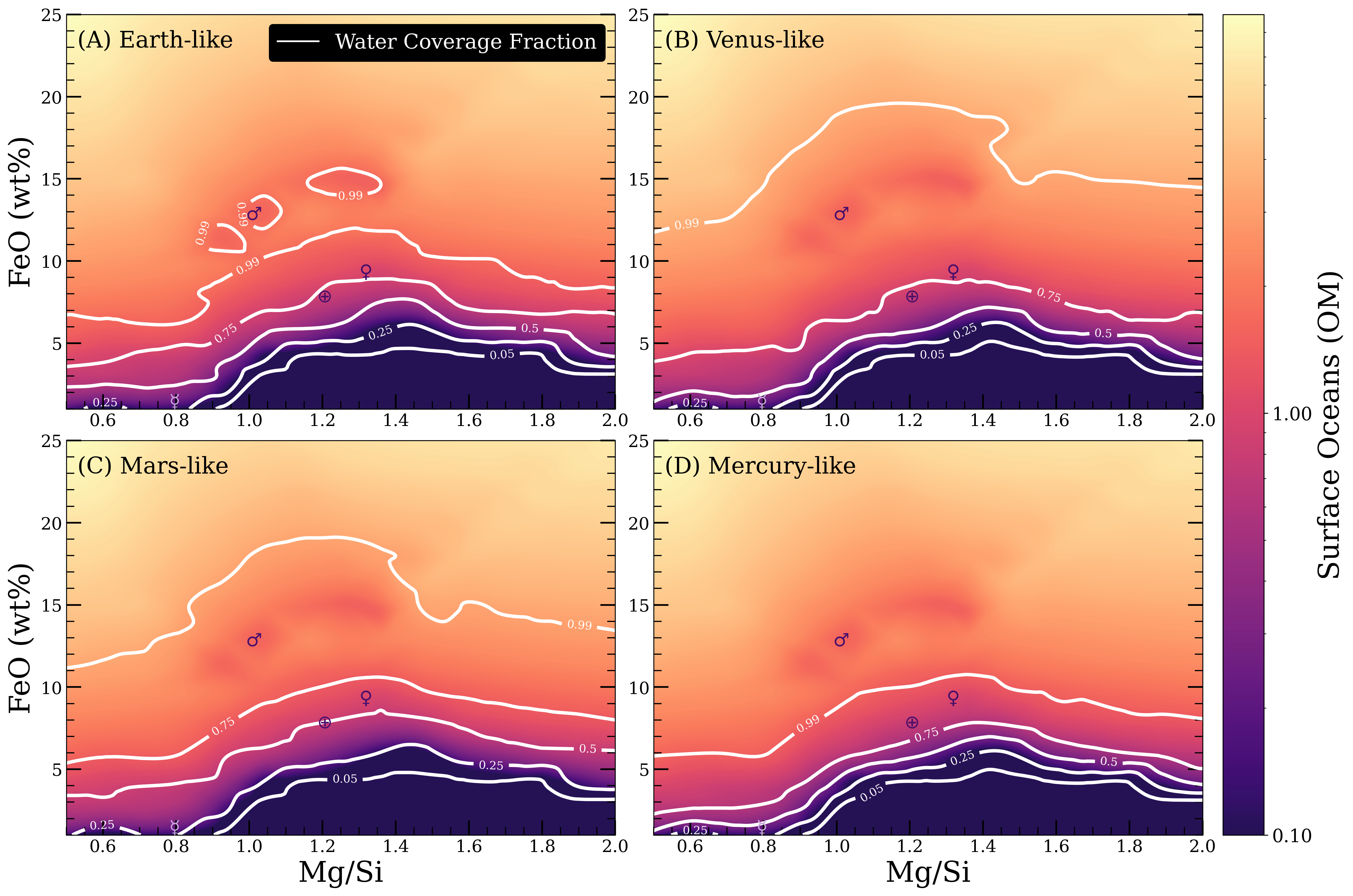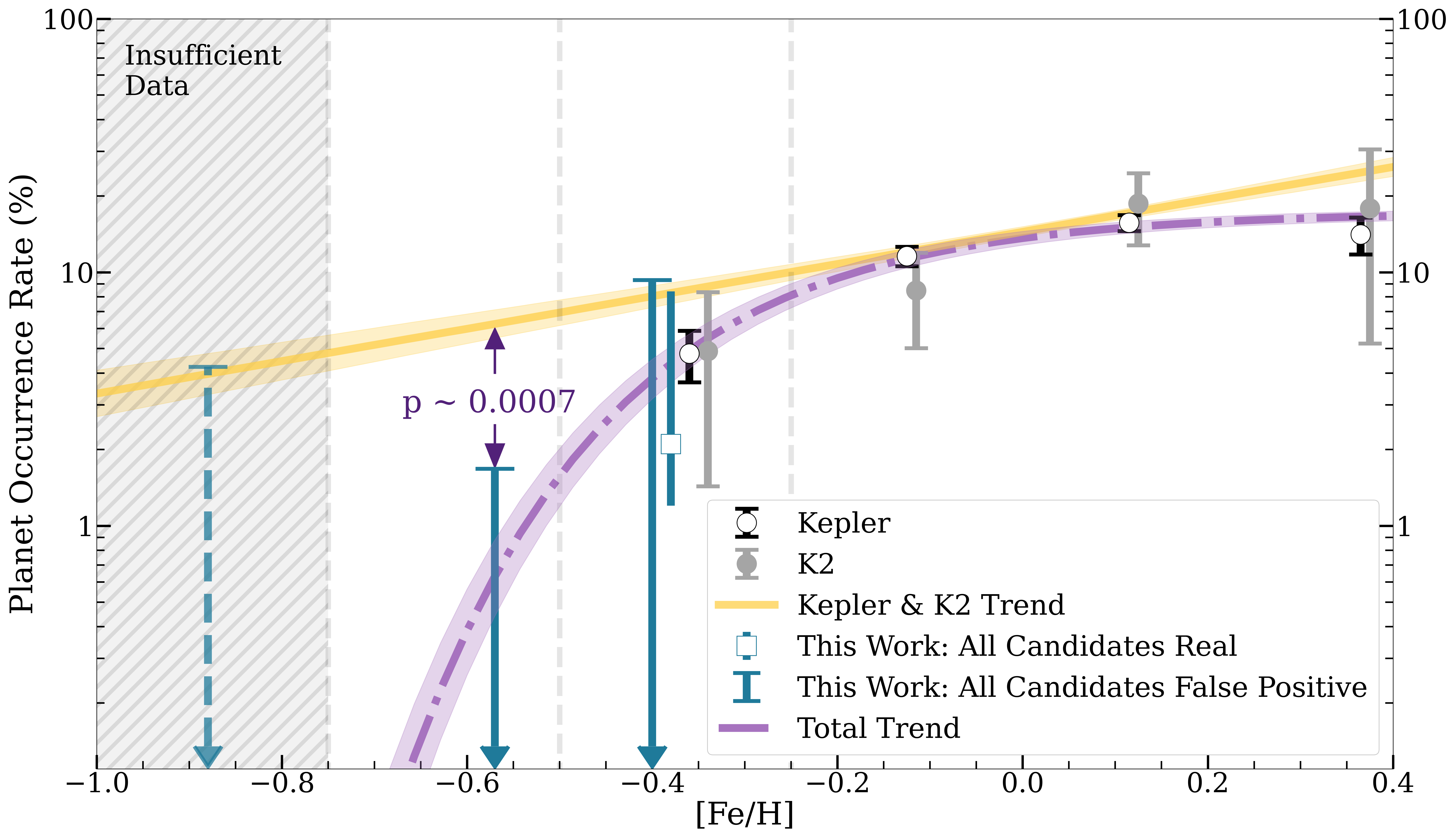Research Overview
My research aims to understand the impact that elemental abundances have on planet formation and evolution.
Specifically, I consider how planet occurrence rates for a given population is affected by varying amounts of
material. Additionally, I use information about these population studies to inform my interior models to understand
how they may impact the evolution of a planet by varying volatiles. The questions my research aims to answer are:
1. How much and what type of material is required for planet formation?
2. Do different planet types prefer different materials based on their location?
3. How much are rocky planets impacted by varying their formation materials or volatiles?
Water Inventory of Rocky Planets
Future missions like Habitable Worlds Observatory aims to observe 25 rocky planets within the habitable zone of their host star. One of the main questions the field is hoping to answer is: Are we alone? However, habitable zone planet's ability to host surface water and a stable climate will be influenced by its composition and topography. Here, we calculate the water storage capacities of 650 rocky planets using their host star abundances to constrain their composition. In doing so, we determine planet compositions conducive to obtaining surface water during their evolution.

First Evidence for a Metallicity Cliff in Super-Earth Formation
Previous studies indicate that under the core accretion paradigm, all planets should require a minimum about of metals to form planets. However, previous surveys were limited to data at solar and super-solar metallicities. With TESS, we constructed a sample of ~110,000 metal-poor stars with spectroscopically derived metallicities to constrain super-Earth formation. We found the first evidence for a significant decrease in super-Earth formation in the metal-poor regime, validating over 25 years of theorectical and observational studies.

Super-Earth occurrence for Kepler (black circles) and K2 (gray circles), TESS data assuming all candidates are real (teal square), and 99.7% confidence intervals to calculate the upper limits for TESS data assuming all candidates are false positives (teal triangles) as a function of metallicity. The [-0.25,-0.5] bin occurrence rates are offset horizontally for visual clarity. The best-fit power-law trend line for the Kepler and K2 data (yellow) is displayed and extrapolated to [Fe/H]= -0.75 showing the 1-sigma uncertainties . We show the combined best-fit exponential trend line for Kepler, K2, and TESS (purple) including the 1-sigma uncertainties. Each metallicity bin is indicated by gray dashed lines. Within the [-0.75,-1] bin, there is insufficient data to further constrain the super-Earth occurrence rate as a function of metallicity (denoted by the gray hatched region).
Impact of Magma on Lava Worlds
Our aim was to understand how much the presence of magma can affect the observable properties of a planet. Magma has a interesting property. It is less dense than solid rock at surface pressures, but it is also highly compressible at high pressure that one would find in a super-Earth's interior. Therefore, a lava world could either be more or less dense than an equivalent mass solid planet. As we addressed this question, we found a few intriguing results. The volatiles present in magma do not cause signifant changes to the the radius of a lava world. We also found three magma structures arise that are shown in the figures below. Lastly, the majority of likely lava worlds that we can detect with our current instruments are most likely as dense or denser than an equivalent mass solid planet.


Hot Jupiter Planet Occurrence Rate around Halo Stars
We investigated hot Jupiter planet occurrence in the metal-poor regime (-2 < [Fe/H] < -0.6).
By considering the most metal-poor stars, we can glimpse into the past to understand planet formation and
what role metallicity plays in planet formation. It is an important first step in determining how planet
formation occurs on a larger scale.


